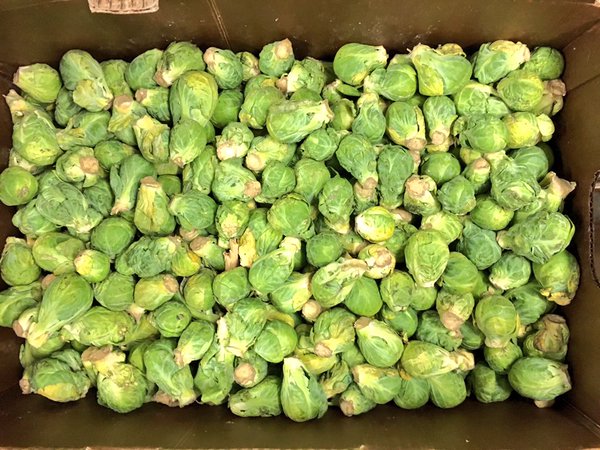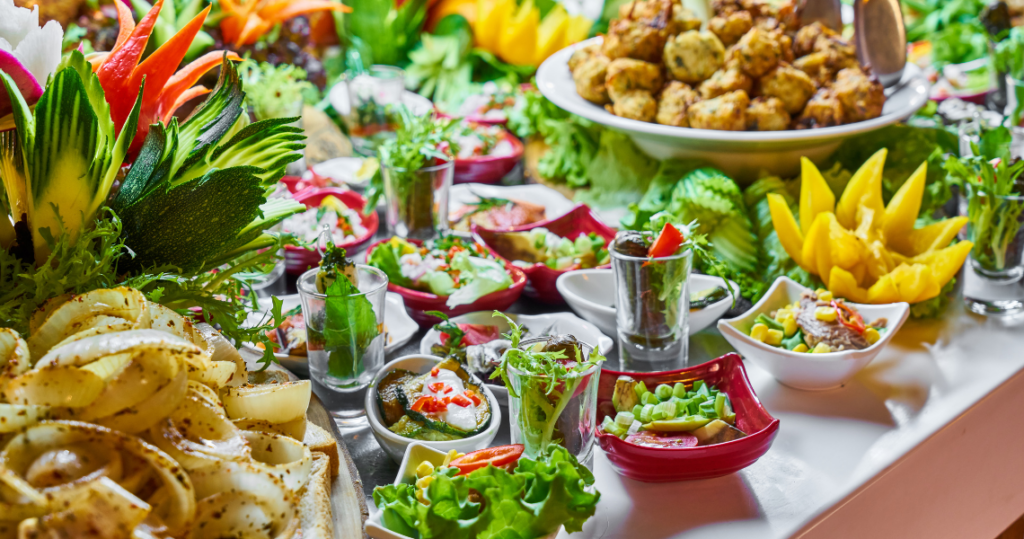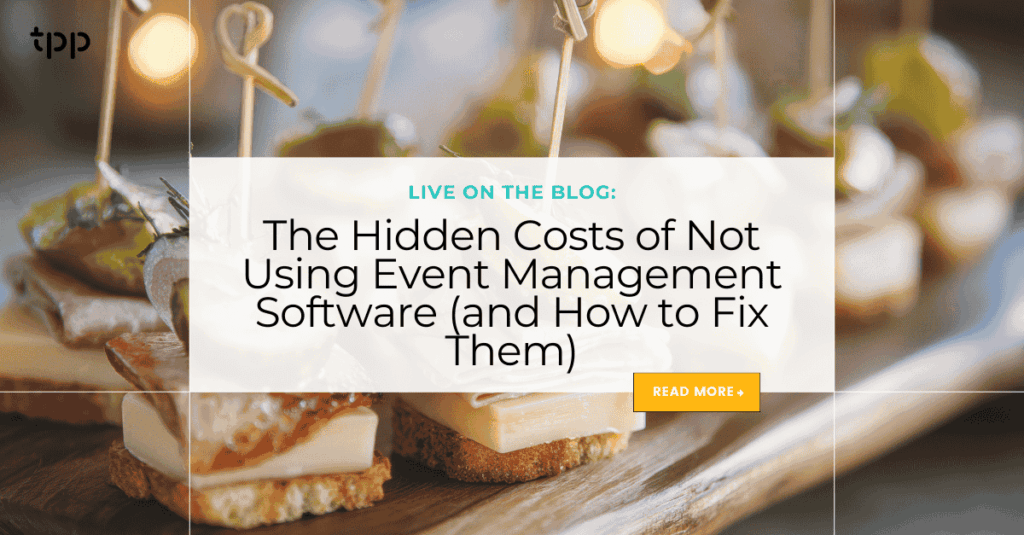Top 3 Zero Waste Wins with Catering Software

In part 1 and part 2 of “Can Zero Waste Initiatives Be Profitable for Caterers?”, Total Party Planner has taken a look at the problems of food waste, food packaging waste, and other kinds of material waste in the food industry. We’ve also talked to two caterers, Chowgirls Killer Catering in Minneapolis and Saucy By Nature in Brooklyn, who are building their business models around sustainability. Their stories are inspiring and prove that zero waste goals are also compatible with profitability in the catering industry.
So, how can you profit from adopting zero waste and sustainability initiatives in your own catering business? The top three advantages are:
1. You save money. Using resources more wisely means you’ll have to buy less of them in the long run. So, when you save water you boiled pasta in and reuse it for something else, that’s that much less water you have to pay for. When you divert waste from the landfill into recycling and composting, you may be able to reduce your trash bill. There are more ideas later in the article, so keep reading!
2. It’s great for PR and marketing. Being able to say that you run your business in a way that is good for the local community and for the environment at large will score you big customer relations points. And in today’s competitive catering market, being good stewards of the environment can give you an edge, not just with individual clients but with corporate clients, too, who want that same image for themselves.
3. It’s great for the environment. Reducing the amount of waste you generate is a win for your local community and for the planet as a whole. Even if you’re somebody who isn’t usually into environmental causes, keeping the planet a little cleaner certainly isn’t going to hurt, so think of it as the icing on the cake – a nice bonus in addition to the money you’re going to save and the favorable points you’ll score in the community.

So, what can YOU do in your own kitchens to reduce waste and possibly save some money at the same time?
Here are some practical tips for how to get started with zero waste efforts and sustainability in your catering business.
And remember – not everything you do has to be on a large scale. Some of these ideas are small, everyday things you can do that shouldn’t take a lot of effort. At first glance, some of the little things may not seem like big deals. But all these little things add up over time and eventually make a big impact.
- Assess your situation. The first step is to assess your current situation. (And if you need help with this or with any step, there are consultants out there who can help with this kind of thing.) How much trash and food waste are you generating? Start compiling numbers. For example, compare the cost of your current disposables to more eco-friendly versions. Look at your utility bills, including trash pick-up. If eco-friendly disposables cost a little more, will you save that money later in your trash bill, so that you’re breaking even financially but winning environmentally? Break everything down into dollars and cents, so you can see if certain environmental choices are good financial choices, too.
- Research your local options. In addition to local consultants who may be able to help you get on the road to sustainability a little faster and with less frustration, find out what your community offers. Is composting available, or would you have to do your own composting? How does food donation work? Who are local zero waste vendors whom you can partner with? Every city or county is different, so spend a little time asking people and researching best options in your area.
- Reduce your water usage. It’s hard to believe it in America, where we take it for granted that clean water is available with the turn of a knob, but water is in short supply even in this country. It’s a precious resource, and it needs to be used wisely and protected. (Check out this article from Business Insider that talks about the national water crisis in America. Also, read more about water sustainability at water.org.) Save the water you boil potatoes and other vegetables in, so you can either let it cool and use it to water plants or use it to make stock, soup, or gravy. Same with water from pasta (although if you reuse that water, remember that it isn’t gluten free, so don’t use it in any gluten-free recipes). By repurposing water, you’re adding flavor to your food and saving money, since you won’t have to buy additional ingredients (such as stock). You’ll also save gallons of water every day, and you’re sure to notice that difference in your water bill.
- Look for food that has reusable or reduced packaging. Just as Chowgirls mentioned in part 1 of this series that they buy food from local farmers who sell their produce in reusable containers, look for food that comes in reusable packaging or less packaging.
- Use every scrap. Remember all the things your grandma did in her own kitchen to stretch every scrap of food, like making her own stock and repurposing leftovers? Turns out these homemade solutions are good for saving money as well as saving the planet. At Chowgirls, they use vegetable scraps to make their own stock. Making homemade stock helps use up vegetables that might otherwise get thrown away, and it saves them money on buying stock. They also make their own bread crumbs. Little efforts like these add up over time, financially and environmentally. Or, do what Saucy By Nature does and create new entrees and side dishes with your surplus ingredients and sell them. You use up your leftovers and create a new revenue stream.
- Review how you calculate portions and ingredients. Have you reviewed your portion sizes to see if they are too big or just right? Are you estimating your event guest count accurately most of the time? What is your method for calculating portions and food costs? If you’re not already using a computerized program that can calculate food costs and ingredient lists based on your portion size, consider trying one. A program like that can help you compare the food costs and profit margins of different portion sizes and also create more accurate ingredient lists, so you you’re not over ordering by mistake.
- Buy local food. Order food that’s produced close to home, including fruits and vegetables that are in season and grown in North America, in order to reduce your carbon footprint. Transporting non-local food uses a lot of fuel, which in turn creates a lot of fuel emissions. Not only that but you’ll be supporting other business owners and their employees in your local economy.
- Create a plan in increments. Once you’ve assessed your situation and looked at your options, choose the changes you want to make, then prioritize the order in which you’ll implement them.
According to a study by the USDA’s Economic Research Service and reported on the USDA’s website, the approximately 133 billion pounds of food that Americans throw away every year at the retail and consumer levels is worth about $161 billion (estimates are from 2010). That’s a huge economic waste.
For your own business, you can use this food waste calculator from RecyclingWorks Massachusetts to estimate your own food waste and how the costs add up for your catering business. You could be throwing away thousands of dollars every year because of food waste – money that could be better spent re-invested in your business.
Whatever happens, don’t give up. Change doesn’t happen overnight. You want to create systems you can stick with in the long term and that make financial sense for your catering business. It’s not much different from the mindset you need when you start “dieting”. Experts say you shouldn’t “go on a diet”. You should think of change to your diet as a change in behavior. You’re making a permanent, lifestyle change that will last your whole life.
The same goes for creating a zero waste, sustainable business. Make decisions and create systems you can carry out consistently. Because after all, these actions will only be beneficial if you follow through with them.
If you missed part 1 or part 2 of this 3-part series, we encourage you to go back and explore the information and links in these articles to make sure you’re getting the complete picture.
We’ve also compiled additional resources to make it easier for you to get started and to help you answer the question, “Can Zero Waste Initiatives Be Profitable for Caterers?” It looks like the answer is, “Yes!”
Full study “Estimating and Addressing America’s Food Losses” by the USDA Economic Research Service
“You Won’t Believe How Much Good Food Goes to Waste”, newsletter by Dr. Joseph Mercola, fascinating facts about how much food is wasted and what different groups and countries around the world are doing to successfully combat food waste
“4 Steps to Move Your Company to Zero Waste” at GreenBiz.com
“Waste Management Helps Businesses Turn Waste into Opportunity” includes great story about how the Phoenix Open, the world’s best-attended golf tournament with approximately 500,000 fans, is a zero waste event; more specific info on the ROI of sustainability
“Why Businesses are Starting to Care about Zero Waste to Landfill” from the Guardian 2013
The EPA’s “Managing and Transforming Waste Streams Tool” for detailed analysis of waste streams and strategies for diverting waste from landfills
End Food Waste Now restaurant-specific food waste info
Food Donation Connection national network for donating surplus food
Food Recovery Network connecting college students with hunger relief agencies to direct surplus food to those who need it
Make Dirt Not Waste composting resource
Sustainable Business aggregate news site for news and business networking
Fork It Over food donation and networking site (even though this site is specific to the Portland, OR area, they have links to other great sites and resources, so it’s worth a look)
Greenstaurant wholesale eco-friendly food service products
Ready to be inspired and informed? For the latest in catering industry news and trends and small business marketing, join the conversation on social media. Follow TPPSoftware on Twitter, like Total Party Planner on Facebook, and explore our boards on Pinterest.
Want to get advice from other caterers and find out how they do things? Join the conversation with #CaterQuest on Twitter!





